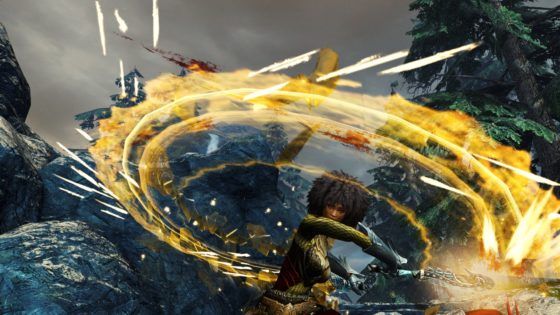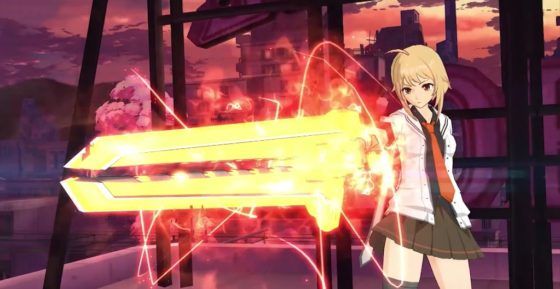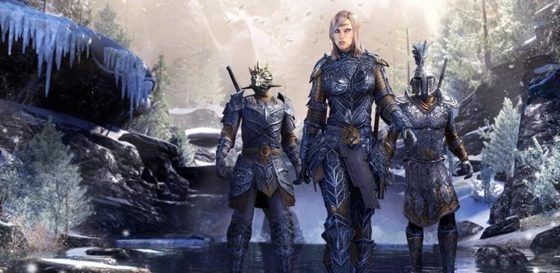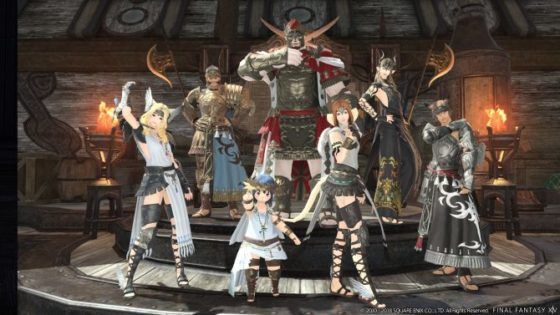This week we’re taking a look at one of the most hotly debated topics there is; the MMORPG business model. There are a few different models that are popular at the moment and a new one at the end that takes inspiration from outside of the gaming industry, but before we can get into that, we need to take a look at the last topic, crafting.
It may not come as much of a surprise but the “Hire a Guy” crafting system only received 5 votes out of 101. I was actually surprised to see it even get that many. Though at the same time I will admit Neverwinter does have an interesting crafting system that stands out. The more traditional, middle of the road crafting system you’re used to seeing in MMOs got only 24 votes. Which means, that with 72 votes, 71% the winner is the more realistic, complex crafting. This means that crafting is complex and time-consuming. You are also limited in how many skills and which skills you can pick from. Your talents will have to follow themes. If, for instance, you decide to become a Cook you won’t be able to also be a Blacksmith. You only have so much time in the day to learn skills.
That brings us to the second part of crafting; which skills we should have. Alchemy had the most votes at 52 while the option with the least votes was City Crafting at 35 votes. It isn’t a massive difference between the two but 9% vs 6% of the vote it seems like City Crafting isn’t a winner. Guild crafting was the next lowest with 37 votes. It seems that while group-based crafting is an idea that gets talked about, it isn’t something people actually want to have implemented. So, we are left with all the solo crafting skills going forward. They are; (in order of the number of votes received) Alchemy, Fishing, Mining, Jewelry Making, Hunting, Runs & Glyphs, Timber Harvesting, Gardening, Foraging, Archaeology, and Scrolls.
With that out of the way, it’s time for us to move on to MMORPG business models. There are five different models to pick from. We’ve left out Pay to Win and Lifetime Subscriptions because both models have proven that they have issues with long-term viability with Western audiences.
Free to Play
Today the free to play model is the norm. As a player, you don’t have to buy the game and there is no subscription fee. In return, however, you’re faced with microtransactions. It’s very easy for these microtransactions to turn the game pay to win, though this is something our MMO would, of course, be avoiding. With this model expect to get the very minimum for free and regularly have to pay for new content, cosmetic items, and boosts. Lockboxes also prominently feature in this business model but an option for the lockbox could be to offer everything on the store for slightly more money than you otherwise would have. A compromise that many who are against the gamble of lockboxes claim they would accept. If this option is selected we will have a look at lockboxes vs no lockboxes in the future. This is the model that Guild Wars 2 uses.
Hybrid
Subscribe or don’t, that is the debate with a hybrid model. With this model, you’ll be paying for the game but if you pay for anything more after that it’s up to you. Once again, there is a delicate balance to be struck. SoulWorker recently ran into some trouble with their hybrid model as one of the things they offered subscribers had fans crying pay to win. A good hybrid model needs to offer enough perks in the subscription to make it worth it, while not offering so much that it seems like a requirement.
Alternatively, you could offer the option to pay for the subscription using in-game currency. This is what World of Warcraft does with their WoW Token. Of course, the in-game currency route is not an easy one. It requires you to spend a lot of time in the game earning that currency. Which is still a win for the studio because the longer you’re in a game the more likely you are to buy items from the in-game store and the more you’re there populating the world for those who do pay.
If the hybrid model wins, a future article will dive into the different types in more detail.
Buy to Play
The buy to play model is very similar to the free to play model with one exception, you have to buy the game before you can play it. You will still have the in-game store, lockboxes, and pay for content updates. Buy to play is especially beneficial to the studio who are tasked with the job of making back the investment made in creating the game, to begin with. ArenaNet has made the buy to play model famous as they’ve used it both with Guild Wars and Guild Wars 2, though Guild Wars 2 eventually became free to play when the first expansion released.
Subscription
Avoid the nickel and diming that comes with the other models and be ready to fork over $12-$15 a month on top of buying the game. A subscription model has a lot of perks though. You’ll get regular small content updates completely free, though large expansions you’ll still have to pay for. You’ll get all the flashy outfits and weapons you’d usually expect to be in the in-game store for free. Double XP events, and others like them, will make a comeback.
Patron
Here’s where I propose a business model that started out being called the Total Honesty Model. It is inspired by Patreon. The idea is the studio gives a monthly goal. The studio comes right out and says “we must make this much money every month to continue running.” Then it’s up to the players to decide how much they can give, offering perks for different amounts given. These perks can include exclusive skins and mounts. Higher tiers can include players being able to design NPCs or even art of their character done by the game’s artists. Going over the goal for the month means work can be done on an expansion. Want to see that expansion made? Put in $50 over the next 3 months and it’s yours. Doing this means you’re voting with your wallet because the studio is only working on the things that have already funded. This complete honesty can have its downsides though. A decline in Patrons will be obvious and will snowball. So, the death of the game will be swift.
Once items are made (not the Patron exclusives) they can go into an in-game store for people who don’t reach the Patron threshold to buy. Maybe you put in $5 towards the expansion when it was being created because that’s all you could give at the time. It still funded, but you didn’t really contribute enough to get the expansion. You’ll still be able to buy it and you got an epic sword for the $5 you gave.
So now there’s just the question remaining, which MMORPG business model seems the best for our dark fantasy MMORPG? Does the Patron model work in your mind? Would you be a Patron rather than a subscriber or buying in the in-game store? Leave your vote in the Strawpoll and your thoughts in the comments.




